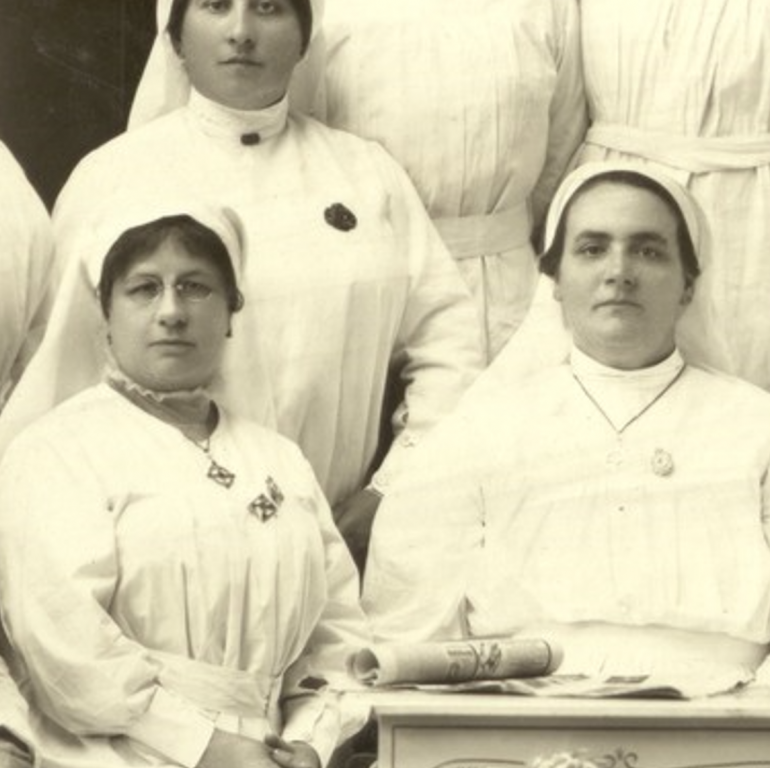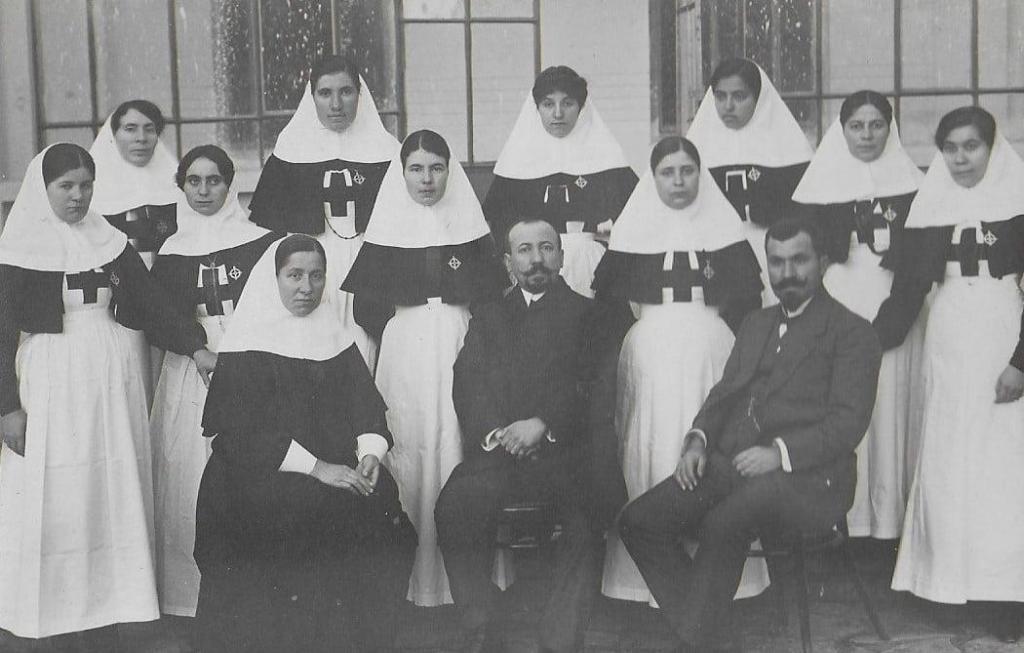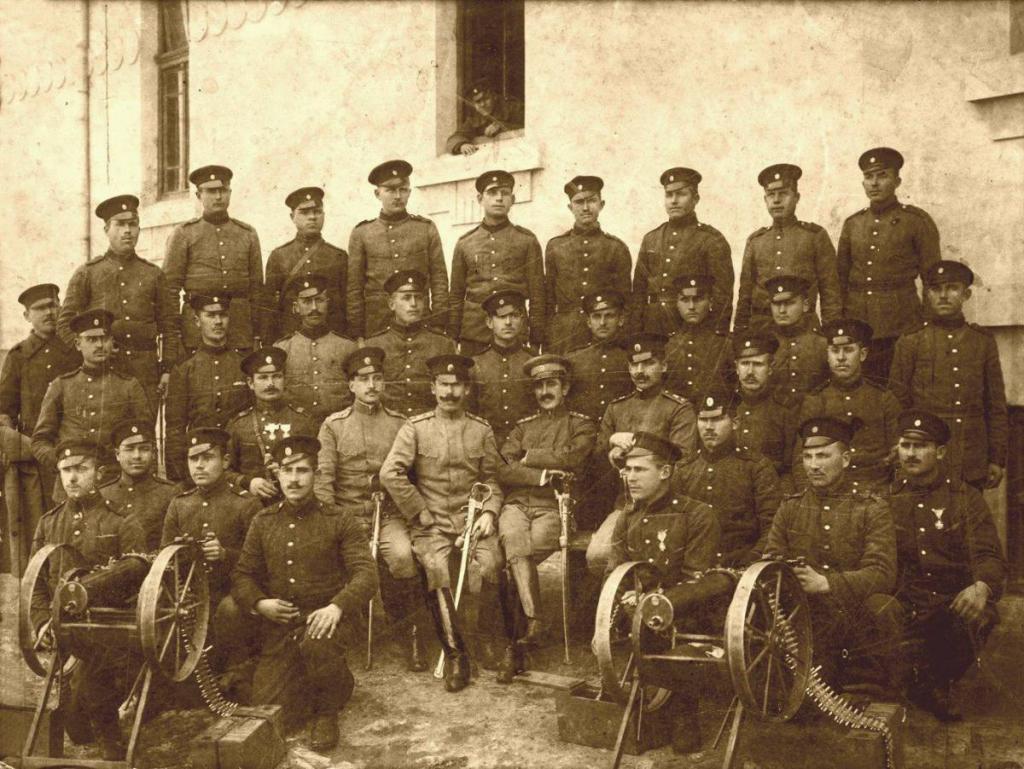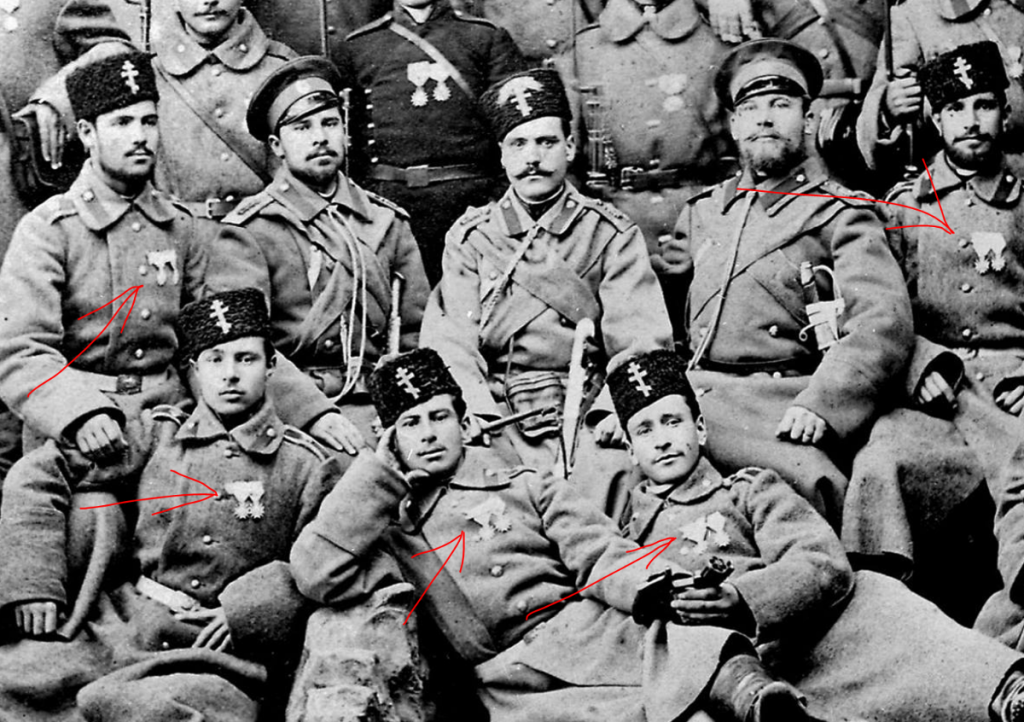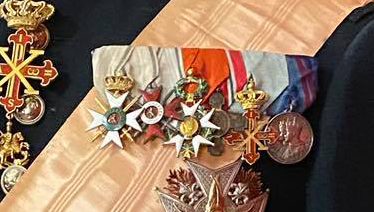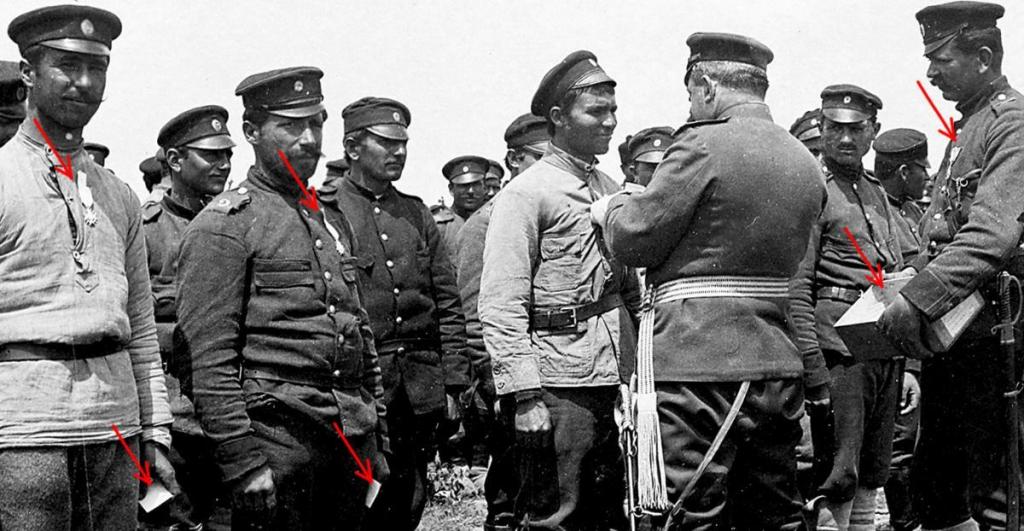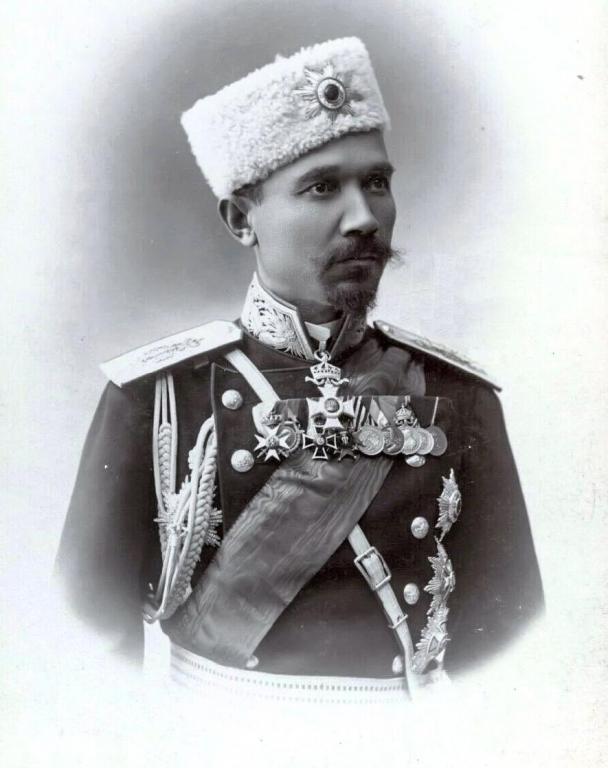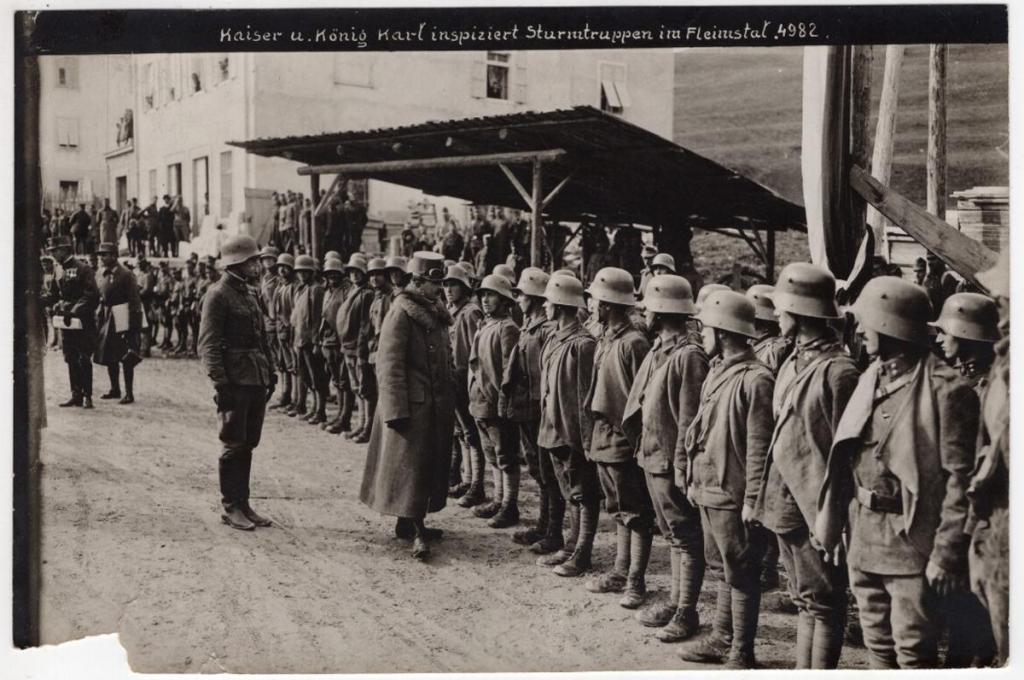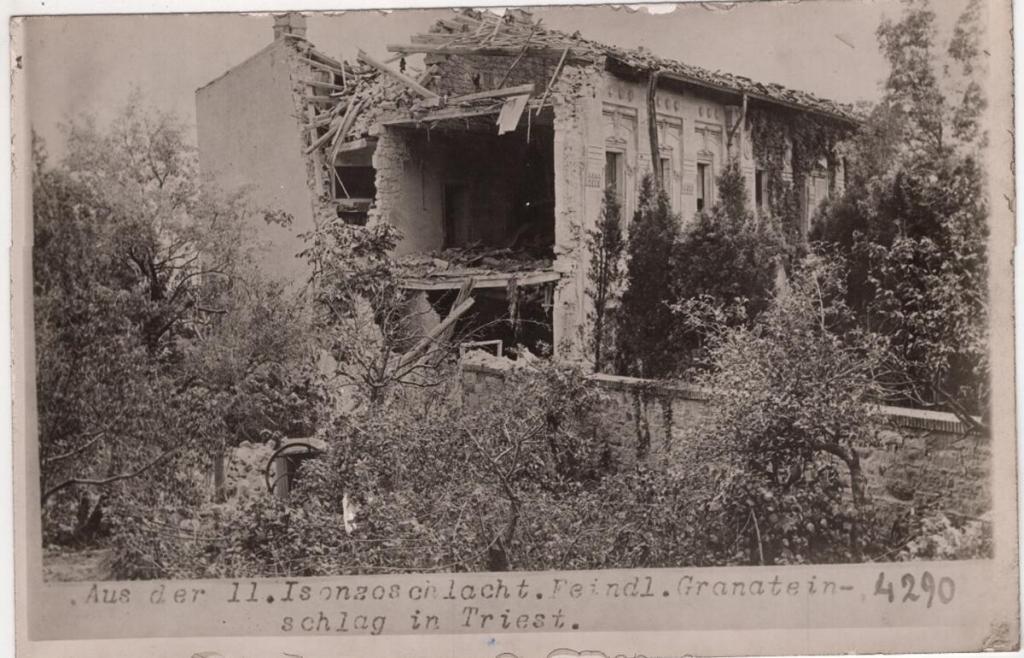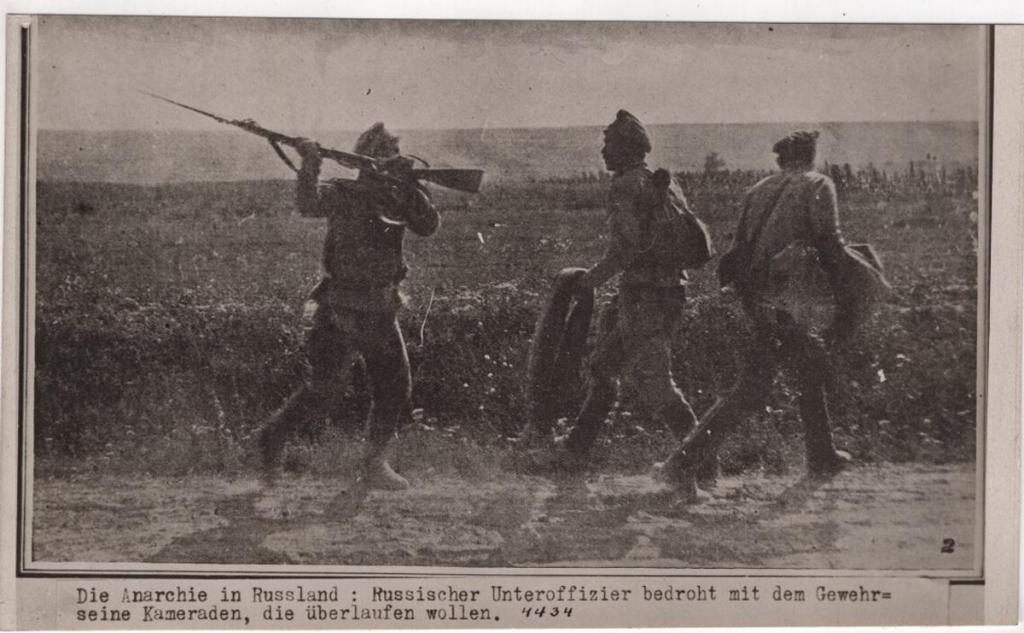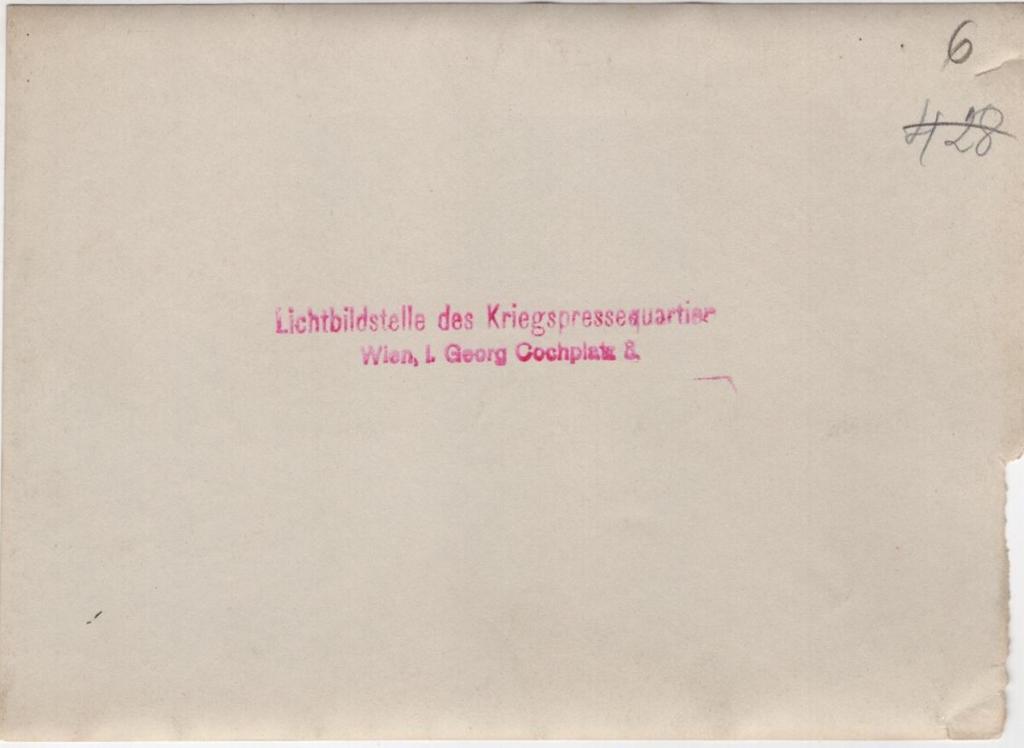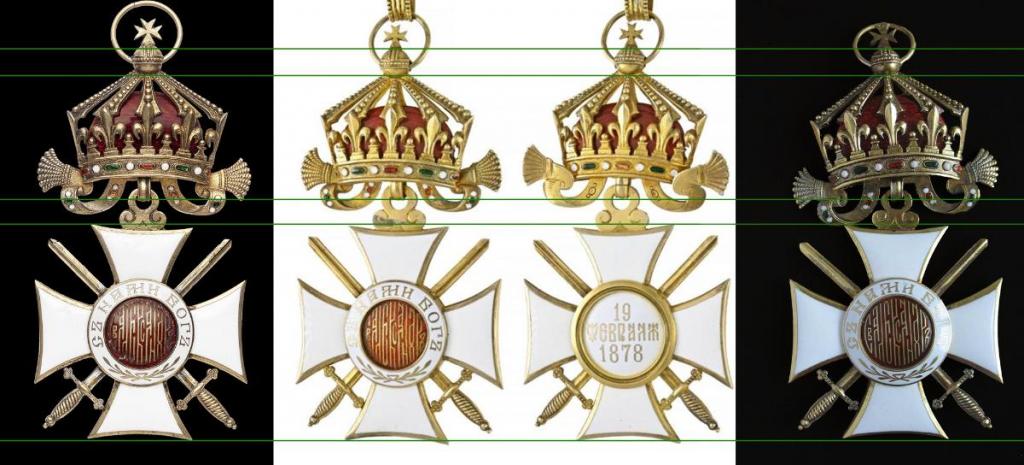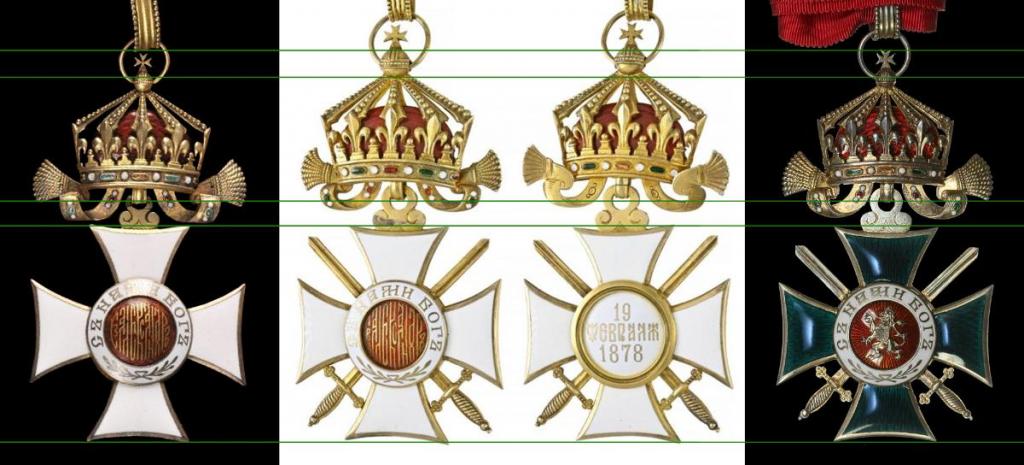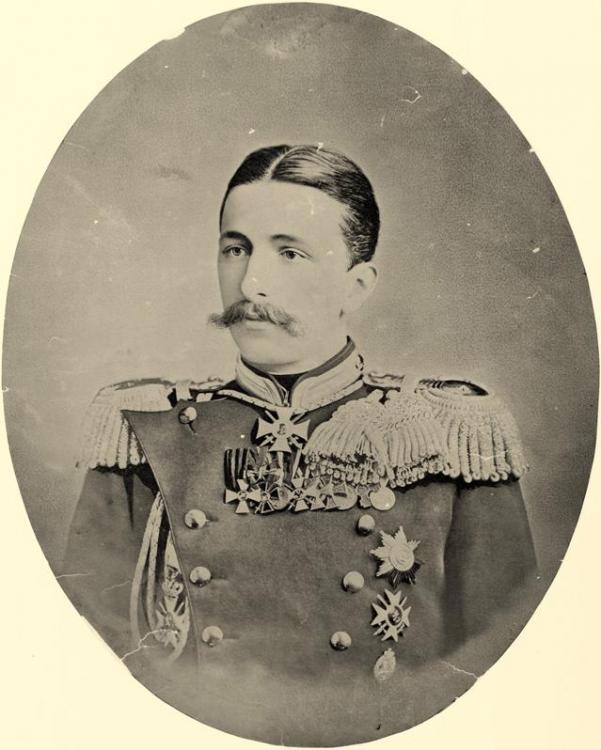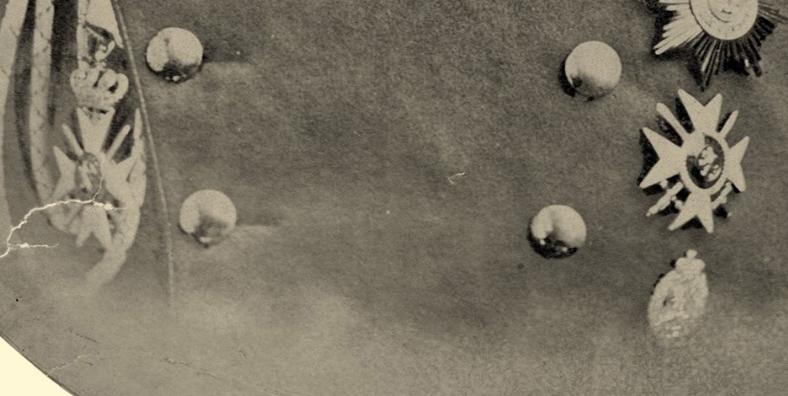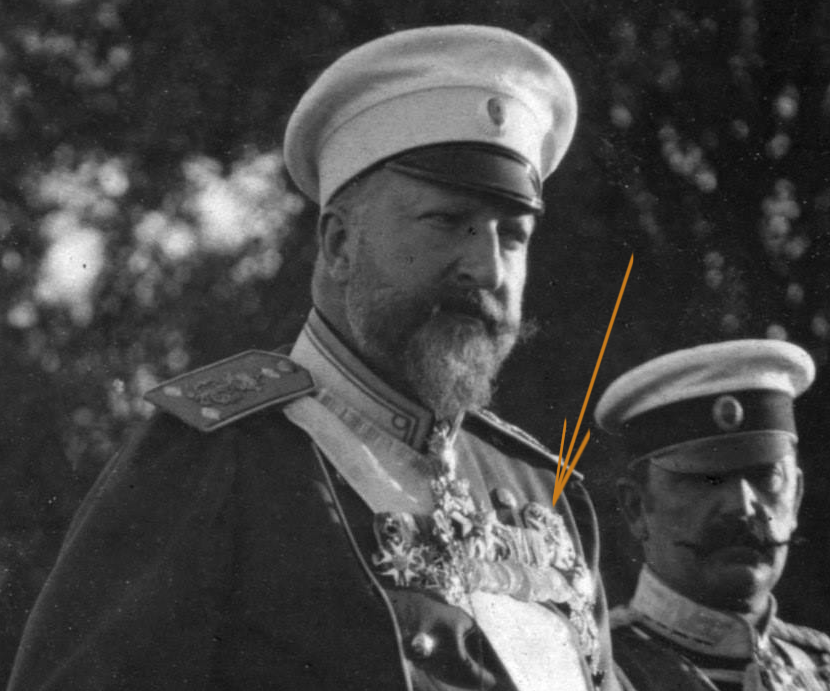-
Posts
232 -
Joined
-
Last visited
Content Type
Profiles
Forums
Blogs
Gallery
Events
Store
Everything posted by ilieff
-

Interesting photographs of decorated people
ilieff replied to ilieff's topic in Central & Eastern European States
-

Interesting photographs of decorated people
ilieff replied to ilieff's topic in Central & Eastern European States
Bulgarian Nurses decorated with the Queen's honorary cross. It's hard to tell due to the quality of the image, but it seems that these were not suspended from a ribbon but instead simply pinned or threaded through a chain or cord. Opinions? -

Interesting photographs of decorated people
ilieff replied to ilieff's topic in Central & Eastern European States
Thanks. I asked if the photo had a date on it because it appears to have been taken around the years of the Balkan wars. ? I am under the impression that bravery crosses were issued on standard straight, looped-through ribbons but since there wasn't a unified manner of displaying enlisted awards at that time (or drafted solders were not aware of one), soldiers were using different ways, depending on their own personal preference and/or method of attaching the award to the uniform. Here is a photo of a detachment of the same infantry regiment, though taken in 1914. We can see 4 bravery crosses, one of which is 1st or 3rd class and one whose ribbon is triangular. Yet, the method of attachment appears to be the same in all 3 cases, hence it seems to be indeed a matter of aesthetics in the eyes of the individual soldier. And one more photo - of a Wehrmacht(?) obergefreiter with the bravery cross on (though we cannot really tell which type it is exactly). -

Interesting photographs of decorated people
ilieff replied to ilieff's topic in Central & Eastern European States
Hmm.... All the people in the photograph (perhaps, excluding the priest and the man in civilian clothing) are officers, hence their ribbons would usually be triangular, right? Do we have a specific date for this photo? -

Bulgarian 1912-1913 Award Document Translation Help
ilieff replied to JustinH's topic in Central & Eastern European States
Yes, Graf's correct All I can add is that 7th Infantry regiment was part of the 4th Infantry division during the war. However, in the records of KIA's during the Balkan wars, the recipient's father had been logged as being part of the 43rd Infantry regiment which was only formed during the mobilisation. The person had been killed in the first stages of the war - on 16th Oct 1912 during the largest battle of the war - the Battle of Lule-Burgas, and was buried there (village of Karaağaç, now suburb of Edirne, Turkey). Lastly, the document itself bears the signature of Major-General Hristo Lukov, Minister of War in 1937. -

Interesting photographs of decorated people
ilieff replied to ilieff's topic in Central & Eastern European States
Of course there were crossed ribbons! Otherwise it will be impossible to tell what class one's cross actually was, right? This photo from 1885/1886 is clearly showing what type of crosses were given back then. -

Interesting photographs of decorated people
ilieff replied to ilieff's topic in Central & Eastern European States
Hi, this is not an enhancement but rather a photo of [what I believe to be] the original decorations displayed at the royal palace. Honestly though, I have no idea why the British medal would be present there - perhaps something to do with international relations/diplomacy at that particular time, as Bulgaria was practically revoking the terms of the Treaty of Neuilly and was perhaps trying to soften the relations with the former Entente countries. In case you want to see a more detailed copy of the colourised image which Graf posted earlier, you can follow this link: https://royalbulgariaincolour.com/цар-борис-трети/ Furthermore, there is yet another hyperlink on that webpage containing a file to download, should you wish to do so. I am not that good with dates, but I believe that George VI was crowned in 1937, not 1936. Edward VIII never had an official coronation, I presume? King Boris III was in London in early 1936 at George V's state funeral. On his way back he stopped in Paris, too, where he held a press conference. This act sounds very unorthodox for a Monarch of the period, hence the French journalists paid their full attention. -

Interesting photographs of decorated people
ilieff replied to ilieff's topic in Central & Eastern European States
-

Interesting photographs of decorated people
ilieff replied to ilieff's topic in Central & Eastern European States
-

Interesting photographs of decorated people
ilieff replied to ilieff's topic in Central & Eastern European States
Nice photograph, Graf If I remember correctly, General Savov was awarded the 3rd class with swords above the crown, then several years later a diamond 2nd class set and eventually a 1st class set with swords through the middle. Nice illustration of the flexibility of the order with its three different sub-divisions. Here is another photograph - it depicts how the bravery cross was awarded at the front. A few things to note here: - Notice how the crosses are awarded with 'straight' ribbons, as they are meant to. It seems that the practice of folding ribbons in a triangular fashion was something the recipients were occasionally doing themselves, if we are to generalise by the large number of triangular ribbons dating from this period. - The paper envelopes for the crosses are also given away - The small wooden box - I wonder if this is the original 'shipping packaging' -

Interesting photographs of decorated people
ilieff replied to ilieff's topic in Central & Eastern European States
General Paprikov with a very nice bar - one of the few portraits which shows the 'Clementine' medal, suspended from a black ribbon edged in blue. -
Despite the fact that it might be irrelevant to the topic itself, I wanted to mention that on multiple images which depict Austro-Hungarian troops in WW1, we can see a four digit number present on them. In all cases I have seen, it starts with "4", sometimes it's printed (I assume by the photo atelier), often hand-written and occasionally visibly edited/corrected. I always wondered what its significance is. An inventory number perhaps? My mind clicked as soon as I saw the above suggestion of the number being "4418", so I thought I'd share this with you. Attached are a few examples and the back of one of them, just in case it yields any clues.
-

Interesting photographs of decorated people
ilieff replied to ilieff's topic in Central & Eastern European States
This must be the wedding ceremony of Prince Kyril of Preslav and Rosario Nadal, which took place in Palma de Mallorca, Spain, in 1989. From left to right: Prince Kubrat of Panagyurishte, the then Crown prince Kardam of Tarnovo, Queen-mother Giovanna (late King Boris III's widow), Queen Margarita, bride and groom [obviously], King Simeon II, Princess Kalina and Prince Konstantin-Assen of Vidin. The signed photograph depicts the King addressing the Bulgarian Parliament upon his accession as Prime-minister in 2001. -

Interesting photographs of decorated people
ilieff replied to ilieff's topic in Central & Eastern European States
Yes, the sky-blue order mantle existed. King Ferdinand supposedly used to wear it on St. George's day when he hosted official ceremonies for certain officers who had been decorated with the order. The portrait itself is by Czech-Bulgarian artist Jan (Ivan) Mrkvička. It was painted in 1911, as indicated by the artist himself. The dating of the portrait provides us with, I believe, the first depiction of [what some people call] the 'grand master's collar' of the Order of Cyril and Methodius, which, 110 years later, is still in use by the current Monarch, as shown in the pictures above. -

Interesting photographs of decorated people
ilieff replied to ilieff's topic in Central & Eastern European States
-
You're right. However, I am not comparing crosses of different classes to each other, per se, but rather the cross we are discussing with the two possible classes in separate images. The intention of the comparison was to compare the crosses when scaled to the size of the two possible variants, hence I uploaded two images and not one. If we are to set the initial scale of the crosses of a single grade to be of identical diameter within a given image, then proportions will remain the same (with the disclaimer i note above, of course). The second image compares the cross to a grand officer's and commander crosses, again scaled to fit the size of the cross we are discussing. If it was indeed a 2nd class cross, with the diameters of the crosses set to scale, all the remaining features will be to scale, as well. Either way, the chances of someone acquiring a lone 2nd class cross with swords and 'marrying' it to an orphaned grand cross star (again with swords), only to then manufacture a replica box for the new 'set', is highly unlikely, in my opinion. I believe this is caused by the slight tilt of the cross in the image with white background. Either way, it is all speculation
-
Here's a visual comparison between this cross (white background) and other examples of grand and commander crosses (black background). I drew some horizontal lines to make it easier to see the ratios. A couple of things to keep in mind: all the crosses were visually fit to size based on the diameter of the arms (hence, this is a broad assumption that: a/ all images were taken 'straight on' and ignoring the inevitable tiling of the camera; b/ the original manufacturers kept the sizes of the crosses the same) Hope it helps.
-
Hi new world, I do not see anything wrong with the order itself - looks like a decent grant cross set, minus the sash, as you already mentioned. The loops you are referring to are not necessarily exclusive to 2nd/3rd class crosses - I believe that the majority of late Boris III high class issues I've seen, actually feature such loop. Similar is the case with SS Cyril and Methodius grand crosses. The crown/cross ratio appears to be fine to me. Later I will try to create a side-by-side visual comparison, for reference later today. The only odd thing is the immaculate condition of the box. Then again, we don't know where it was kept al those years (assuming it's genuine, of course) - this could be one of those awards which were left with their paper sleeve on in a bank vault for decades (though, this contradicts with the missing sash?)
-

Bulgaria Order of Bravery "Three dots" emission
ilieff replied to V.Vazov's topic in Southern European & Balkan States
Yes, I believe that both gilded and enamelled rings were being used for decoration in this initial period, though I cannot really say whether this had any symbolic meaning or whether it was simply a matter or availability of stock. Among the first people to be decorated with the order were Nikola Genev, Olimpiy Panov, Atanas Uzunov etc. but they were given the 4th class, so we cannot really judge by photographs of them. Captain Danail Nikolaev is the first Bulgarian to have been decorated with the 3rd class badge in April 1880. His badge, as seen on later photographs, has a gilded ring (probably, from the first batch which was produced in St.Petersburg). Just after the end of the war with Serbia, in early 1886, he is again decorated, this time with the second class badge, also with gilded ring. Strangely enough, I was matching two photos of him, taken in different time periods and on one of them, the 2nd class badge appears as if it's enamelled, rather than gilded. I attached a photo comparison for you. At the current point though, I am dismissing this as simply a bad exposure of the film (yellow/gold colour has a tendency to appear as dark, near black on old black and white photos. Another decoration with the 2nd class badge in 1886 was bestowed upon major Racho Petrov who also displays a 'gilded ring' order on later photographs. Now, in contradiction to the above, during the so called Bulgarian crisis in 1886-1887, all three regents, Stambolov, Mutkurov and Zhivkov, assume/self-award themselves the 1st class set of the order, as heads of state. The rings of their badges appear to be enamelled in green, rather than gilded. The Serbian Monarch, Milan, is also awarded the 1st class set shortly after the establishment of the order. On a single photograph, in which he is wearing a bar which includes a bravery order, it appears that it's enamelled, i.e. green. Other people who are also awarded with the 1st class set between 1880 and 1884 are the Romanian King Carol and Russian Emperor Alexander III - if anyone is able to find photographs of them wearing the Bravery order, we can draw some further conclusions. Further to the above, I came across this image of young prince Alexander in cavalry uniform. I don't want to draw premature conclusions, but if the order in the picture is enamelled in green and we take lack of beard as indication that the photo was taken between 1880 and 1883, then this is the earliest photograph, depicting a 1st class 'green' set of the order, as of yet. Then again, the image itself isn't clear enough to say for sure and the above-mentioned exposure defects might actually produce deceptive results. More research is needed... Vazov, I actually have a slightly better quality copy of this portrait of the Prince and I've zoomed in multiple times in an attempt to see the emission of the badge. Unfortunately, nothing is visible on the lower part of the ring and even though my assumption is the same as yours (7-dots issue) we cannot fully dismiss the possibility of it being something else (perhaps even 3-dots). -
My humble opinion is that the skulls and bones do not represent masonic symbols in this particular case but rather the symbolism of the Totenkopf and what the Germanic people of the 19th century (and earlier) make of it in its military sense (not to be confused with the later Nazi symbol of the SS). As a side note, the same symbol was used by various armies through the centuries and some still do to this very day. I don't share your opinion regarding the highest class of the order - I think that the Grand cross badge has been used on multiple occasions - there are several images and paintings confirming its usage on regular basis. Prince Alexander was wearing the sash on official ceremonies, as per protocol. He also kept his orders after the abdication and even had a portrait of himself painted where he appears in full parade Bulgarian generals' uniform and wearing the Grand cross (though without the skulls and crossed bones). Prince Ferdinand, being quite pedantic about wearing his orders, also wore the sash whenever he was performing military inspections and manoeuvres, opening the annual sessions of Parliament, St George's day etc. Naturally, after 1909 the Grand cross of the Order for Bravery was used less and less (since the introduction of a higher order in 1909). King Ferdinand was occasionally putting it on even after His abdication - just for photoshoots and the rare official occasions (e.g. the wedding of King Boris in 1930). The first two images Vazov posted above should be those of the 1st class set which was presented to Kaiser Wilhelm II during WW1. These were essentially the same overall-looking set as the one King Ferdinand had. The minor differences are in the central medallion (By the way, note the shape and position of the lion's tail - it's the same as that of the lion, found on the Samara flag top. Possible clue, perhaps.
-

Bulgarian Bravery order - early Austrian made
ilieff replied to new world's topic in Central & Eastern European States
Great find! These images give answers to two questions at a time - who might have been the manufacturer and what the cases looked like. Thanks -

Bulgaria Order of Bravery "Three dots" emission
ilieff replied to V.Vazov's topic in Southern European & Balkan States
Vazov! Thanks for tagging me - otherwise I wouldn't have seen this thread, as I only check 'Central European States' section. Why in this section? Has there been a change I am not aware of? Congrats on spotting this. The few times when the Samara flag top has been displayed in the National military history museum, it has always been positioned with the reverse* facing upwards, so people were unable to see which emission the order actually belongs to. It is very curious indeed. My opinion remains unchanged though - I still believe that three stars is an interwar emission of the order and that the ring on this order has been changed at some point, though it makes little sense to do so, especially for a (literal) piece of history like this. I remember reading about the fact that the order was not imbued in the flag top straight away but a few years later. I cannot recall the source of this info but I will try to verify this. Nevertheless, even if this info is correct, this won't provide a reasonable answer to the above brainscratcher . In another thread (in a different to the current section, sigh) I posted pictures of a 1st class set supposedly owned and worn by Prince Alexander I - the breast star also had three stars on its ring. Could that be a clue, perhaps? *Which, by the way, is the one we all expect - КНЯЗЬ НА БЪЛГАРIЯ, as per the old orthography. -

Interesting photographs of decorated people
ilieff replied to ilieff's topic in Central & Eastern European States
Reviving this forgotten thread by sharing an image of King Ferdinand wearing [what appears to be] Prince Alexander's old 1st class breast star of the Bravery order with skulls and bones - the one with the round gilded base. and Portrait of lieutenant-colonel M. Poshev with a nice pre-war bar (he died on the battlefield in the first month of the Balkan war). Note how the X and XX years crosses are positioned one above the other. Very neat and logical in my opinion.


